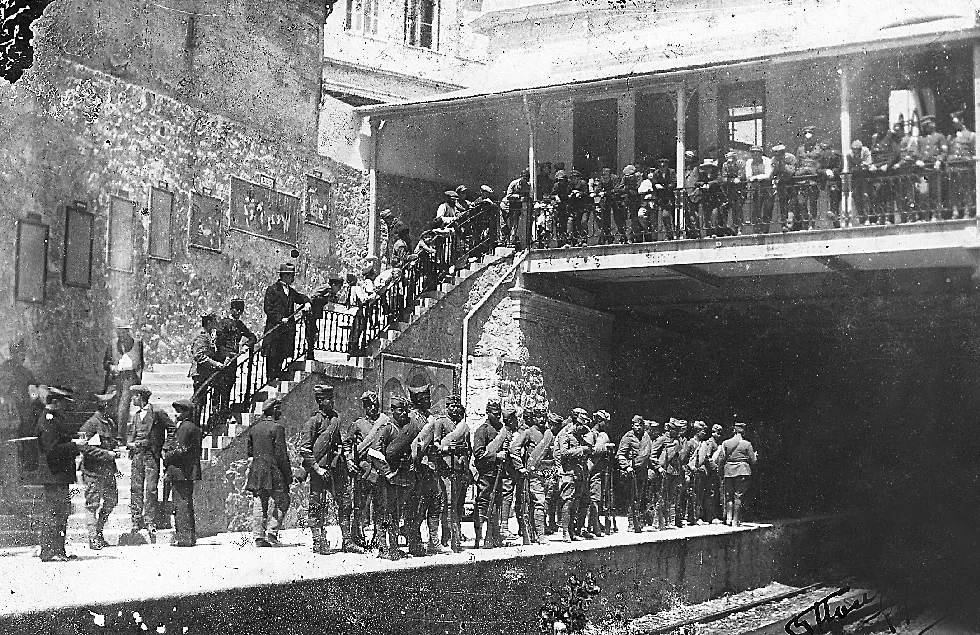The Athens Metro is quite small but is modern and works well. Until 2004 the only line was the Athens-Piraeus launched in 1869 as a steam railway, before being electrified in 1904. For the 2004 Olympics two more lines were added and until today the Athens metro is expanding with the construction of two more new lines and the extension of existing ones.
Hundreds of thousands of passengers in Athens walk along metro stations and ride trains to get to their destination daily. Today’s Athens underground connects important landmarks of the Greek capital, such as the Acropolis, Athens Airport, Port of Piraeus, Central Railway Station and Olympic Stadium, in addition to connecting downtown Athens with the suburbs. The Metro system is actively connected with the other means of public transport, such as buses, trolleys, the Athens Tram and the Proastiakos Athens suburban railway forming the metropolitan area of Athens transport network.
the Lines
The Athens Metro lines are not only identifiable by numbers, but also by color:
Line 1 (green): The major stations on line 1 are Piraeus (the city’s main port), Peace and Friendship Stadium, Karaiskakis Stadium, home to Olympiacos soccer team, and Omonia and Monastiraki. Launched in 1869 is the second oldest underground system in the world after the London Underground!
Line 2 (red): This line connects Athens railway station with Omonia Square, Syntagma Square and the Acropolis.
Line 3 (blue): Links Athens International Airport with the city center, stopping at Syntagma Square and Monastiraki.
Line 1, the metro is passing in front of the Stoa of Attalus, in the Ancient agora of Athens heading to Piraeus port.
Line 1 opened as a conventional steam railway in 1869 and electrified in 1904. In 1991, Attiko Metro S.A. constructed and extended Lines 2 and 3. It has significantly changed Athens by providing a much-needed solution to the city's traffic and air pollution problem, as well as revitalising many of the areas it serves. An extension of Line 3 is under construction towards Piraeus and also other extensions of existing lines, as well as a new Line 4, are under consideration.
Metro station museums
While excavating the underground tunnels and stations, numerous buildings and items that had been buried for centuries were uncovered. To preserve these interesting findings, Athens dedicated part of the stations to display them. The most imposing “metro station museums” are: Acropolis, Dafni, Evangelismos, Monastiraki, Panepistimio and Syntagma.
the Monastiraki station
Monastiraki station, right beneath the Acropolis and next to the site of the Ancient Agora of Athens, is one of the oldest stations of Athens metro system. It was opened on 17 May 1895 under the name of "Monastirion" on Line 1. The archaeological findings revealed continued occupation of the area since the 8th century BC. up until today, while the most important finding that came to light is the riverbed of the Eridanos River that continues to flow beneath the modern city and which passengers can admire right next to the platforms.
the Acropolis station
Finally, the station that is most strongly identified with Athens' sights is the Acropolis. The interior of the station houses in its showcases the objects of everyday life of the ancient Athenians found there. Particularly notable is the copy of the Parthenon frieze displayed on the platforms, as well as copies of the Parthenon’s sculptured gables at the station's entrances.
Athens Metro how to
Timetable and frequency
Athens Metro runs approximately from 5:30am till 12:30am (midnight). On Fridays and Saturdays, the last train departs at 2am. During peak hours, the metro runs every 3 minutes, and during the slowest hours, they run every 5 to 10 minutes.
Info
- All trains stop at all stations all the time, except of the section Airport – Douk. Plakentias of line 3 where trains run every 30 minutes (this section is shared with the Suburban Railway).
- Due to several cases of pickpocketing inside the Metro system during the last years, you are advised to be constantly aware of your belongings and your pockets, especially in central stations and inside trains.
Map
You can download the Athens metro map for an off-line use
Tickets
Types of tickets for the Athens metro
There are two types of tickets for the Athens metro: 1) single tickets, and 2) passes.
Single tickets (prices of May 2022)
- A 90 minute ticket, which costs 1.20 euro
- A bundle of 5 tickets, which costs 5.70 euro
- A bundle of 10+1 tickets, which costs 12.00 euro
Passes for unlimited travel
- A 24-hour pass, which costs 4.10 euro. This is valid for 24 hours from the time of first validation.
- A 5 day ticket, which costs 8.20 euro.
If your staying in Athens is for more than 2 days , the five day pass is by far the best option.
How to get your Athens metro ticket
You can either get your Athens metro ticket or pass at one of the machines in any metro station, or from a till in most metro stations. Note that selling machines are offering a multiple languages menu.
The paper tickets can be recharged, so instead of getting a new ticket you can just recharge your old one.
Athens metro tickets to Airport
There are three types of Athens airport metro tickets that you can use: 1) one-way airport metro ticket, which costs 9€, 2) a return airport metro ticket, which costs 16€ (valid for 48 hours), 3) the "Tourist ticket" at 20€ valid for 3×24 hours.
The tourist ticket includes a return trip to the airport plus unlimited transportation in the centre. If you are in Athens for three days, it’s a great option
✔ How to organize your holidays in Athens
Ferry to the islands: Book your ferry to to Santorini, Mykonos and other islands.
Hotels: Discover our selection with the best hotels and accommodation in Athens.
Tours and Activities: Explore the city with some amazing tours and activities.
Car rentals: Discover the the surroundings on your own by booking your car.















